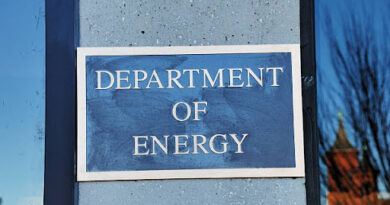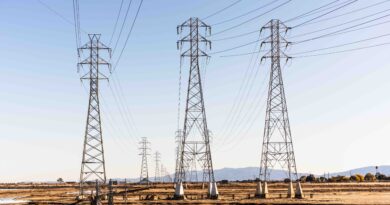High-Priority Areas for Accelerated Transmission Expansion Announced
The U.S. Department of Energy (DOE) released a preliminary list of 10 potential National Interest Electric Transmission Corridors (NIETCs). This is to accelerate the development of transmission projects in areas that present an urgent need for expanded transmission. The minimum eligibility criteria for direct loans under the Transmission Facility Financing (TFF) program was also announced by the DOE. The TTF program, which is supported by President Biden’s Investing in American agenda, can finance the development of billions of dollars of transmission projects in designated NIETCs. The DOE is now seeking public input on both the preliminary list of potential NIETCs and the TFF program application and evaluation process.
“At more than a century old, our power grid is showing its age, leaving American consumers to bear the costs of maintaining it with frequent and longer power outages from extreme weather,” said U.S. Secretary of Energy Jennifer M. Granholm. “The Biden-Harris Administration is leveraging every tool to expand transmission and deploy more reliable, affordable, and clean power in every pocket of the nation.”
“In order to reach our clean energy and climate goals, we’ve got to build out transmission as fast as possible to get clean power from where it’s produced to where it’s needed,” said John Podesta, Senior Advisor to the President for International Climate Policy. “As today’s announcements demonstrate, the Biden-Harris administration is committed to using every tool at our disposal to accelerate progress on transmission permitting and financing and build a clean energy future.”
“President Biden’s leadership has sparked an unprecedented expansion in American manufacturing and clean energy, and we are building out the nation’s power grid to keep pace with this historic growth,” said Assistant to the President and National Climate Advisor Ali Zaidi. “Thanks to the President’s vision, the United States is projected to build more new electric generation capacity this year than we have in two decades – and 96 percent of that will be clean. Building on last month’s launch of a public-private mobilization to expand the capacity of the existing U.S. transmission network, upgrading 100,000 miles of power line, this step forward on corridors is the latest way the Biden-Harris Administration is accelerating grid expansion to deliver reliable, affordable power across the country. This is how we win the future, by harnessing new technologies to grow our economy, create hundreds of thousands of good-paying jobs, and protect the planet for generations to come.”
According to the DOE, The President’s Bipartisan Infrastructure Law amended the Federal Power Act to clarify the Secretary of Energy’s ability to designate any geographic area as a NIETC if it is determined that consumers are harmed, now or in the future, by a lack of transmission in the area and that the development of new transmission would advance important national interests for that region, such as increased reliability and reduced consumer costs.
A NIETC designation unlocks critical federal financing and permitting tools to spur transmission development, including direct loans through the TFF program, public-private partnerships through the Transmission Facilitation Program, and Federal siting and permitting authority of the Federal Energy Regulatory Commission (FERC) in certain limited circumstances. Developers and state and local siting authorities may also be able to leverage the environmental analysis conducted by DOE as part of the NIETC designation process to complete local siting and permitting processes, which could ultimately accelerate siting and permitting for transmission projects in these targeted, high-priority areas.
DOE released final guidance on NIETC designation in December 2023, and initiated a four-phase process by inviting interested parties to suggest specific geographic areas where a NIETC designation may be particularly helpful in advancing transmission to meet significant regional need. After independent analysis and review of public input, DOE’s preliminary list of potential NIETCs includes 10 narrow geographic areas spanning nine of the regions identified by DOE’s 2023 National Transmission Needs Study.




